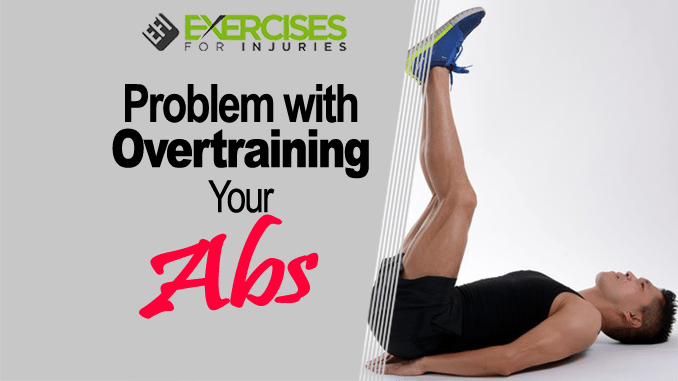
There always seems to be a new trend when it comes to working out. Last year, it was squatting; this year, it’s ab-crunching. The problem with most fads is that they don’t last long, and there’s always something newer and better around the corner. Except with ab-crunching, that isn’t necessarily the case. It’s one of those rare instances where something new doesn’t necessarily mean something better. While crunches will help you create an impressive six-pack, they also have downsides. If you’re constantly overtraining your abs, you might want to take them a little easier on these workouts to prevent specific risks.
The Problem with Overtraining Your Abs
The article focused on those performing Olympic lifts, but they did bring up some interesting points that can be carried over to the injured client.
To hold a load overhead, you need good stability in the flexors and extensors of the trunk plus good deceleration of the flexors of the truck. Not being able to do so increases your risk of injury and decreases your ability to hold a load overhead. This is important for the athlete but also for the general public. Overhead movements are essential for all and have been avoided late in the fitness industry due to the perceived risk of injury. I make sure I do at least one overhead pressing movement with my clients, but if your client can’t do a proper overhead weighted action, look at their trunk flexors and extensors.
Truck flexion (abdominals) exercises are often done daily, while lower back exercises may be done 2 to 3 times a week. This leads to muscle imbalances in the flexion and extension muscles of the trunk. This imbalance could lead to an alteration in the tilt in the pelvis, which affects latissiums dorsi and increases the risk of injury in the shoulder.
The writers provided a sample exercise program to train the trunk flexors and extensors. The exercises were lever abdominals, medicine ball seated twists, the bridge with arms lifted, marching bridge with arms raised, dumbbell farmer’s walk, supine weighted extended hold, hyperextensions with arms out straight, hyperextension to row with weight (medicine ball or plate), hyperextension with weight (plate or medicine ball), and barbell overhead circle walk.
Which is Better, the Full Can or Empty Can Exercise for the Rotator Cuff?
I am big into the rotator cuff after I did my master’s project on exercises to overcome a rotator cuff injury.
When I see new rotator cuff research or articles, I always like to take a look.
Some clients may report shoulder impingement when performing the empty can exercise. Often it is shoulder impingement where the supraspinatus tendon compresses between the coracoacromial arch and the greater tuberosity.
The purpose of the full-can exercise is the exercise activates supraspinatus but also limits the reduction of subacromial space.
Mike Reinold did some research in 2007 on the whole can versus the empty can exercise. I remember reading the article when writing my master’s project. It was fantastic to have Mike (Mr. Reinold) review Muscle Imbalance Revealed and praise it highly.
The article recommended the full can exercise over the empty can. I very rarely get my clients to perform the open can exercise.
I hope you enjoyed the research highlights as much as I did. There always seems to be a new trend when it comes to working out. Last year, it was squatting; this year, it’s ab-crunching. The problem with most fads is that they don’t last long, and there’s always something newer and better around the corner.
Except with ab-crunching, that isn’t necessarily the case. It’s one of those rare instances where something new doesn’t necessarily mean something better. While crunches will help you create an impressive six-pack, they also have downsides.
If you’re constantly overtraining your abs, you might want to take them a little easier on these workouts to prevent specific risks.
Have a great day.
Rick Kaselj, MS
If you are looking for more info, I go through a stack of rotator cuff exercises in Effective Rotator Cuff Exercises:




